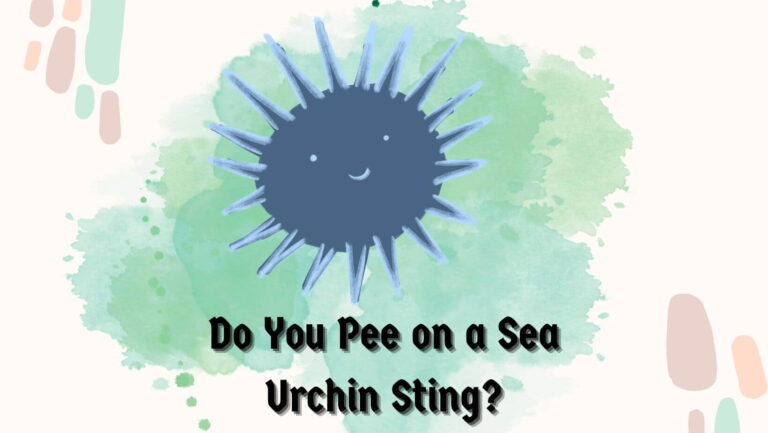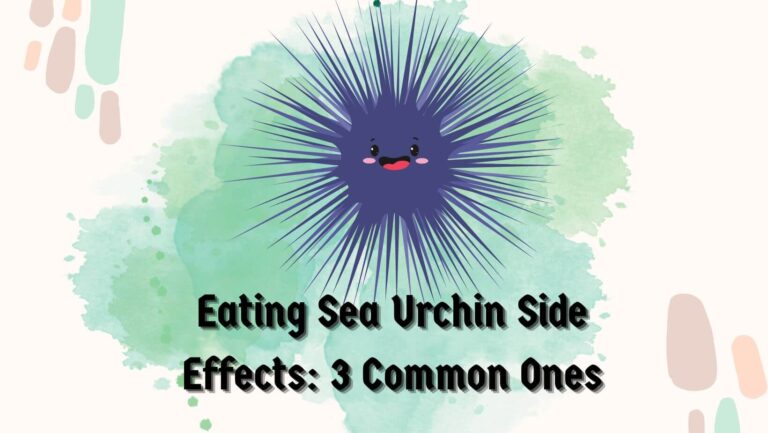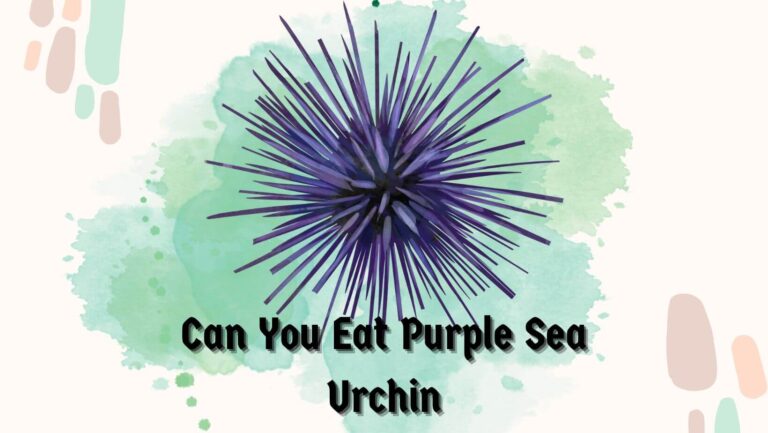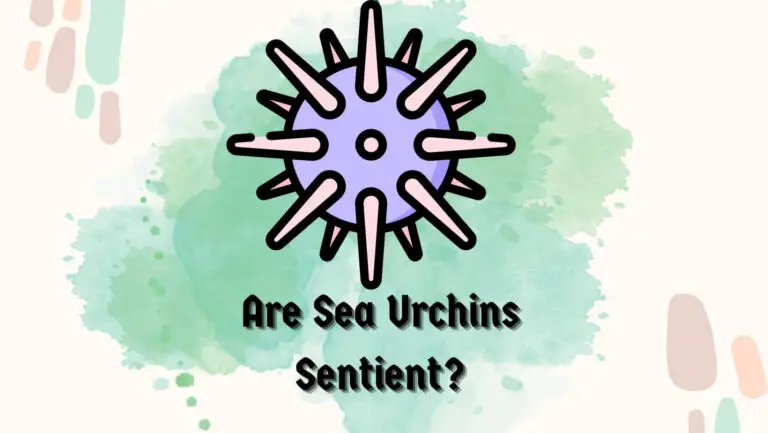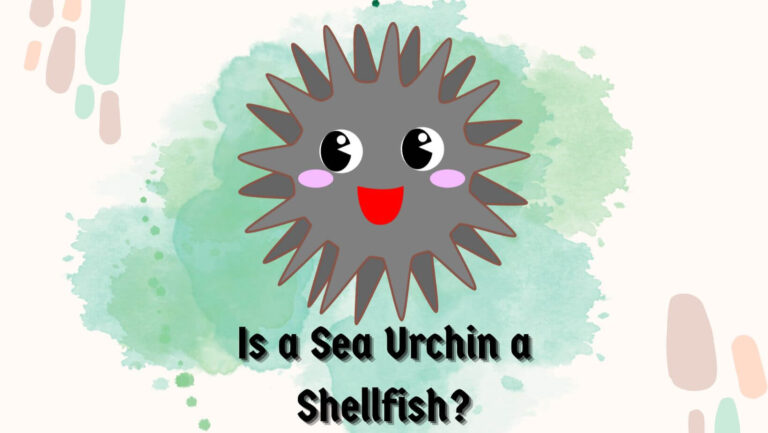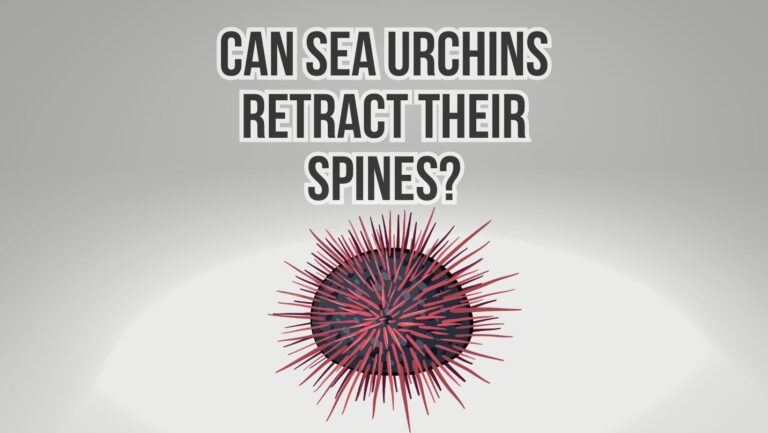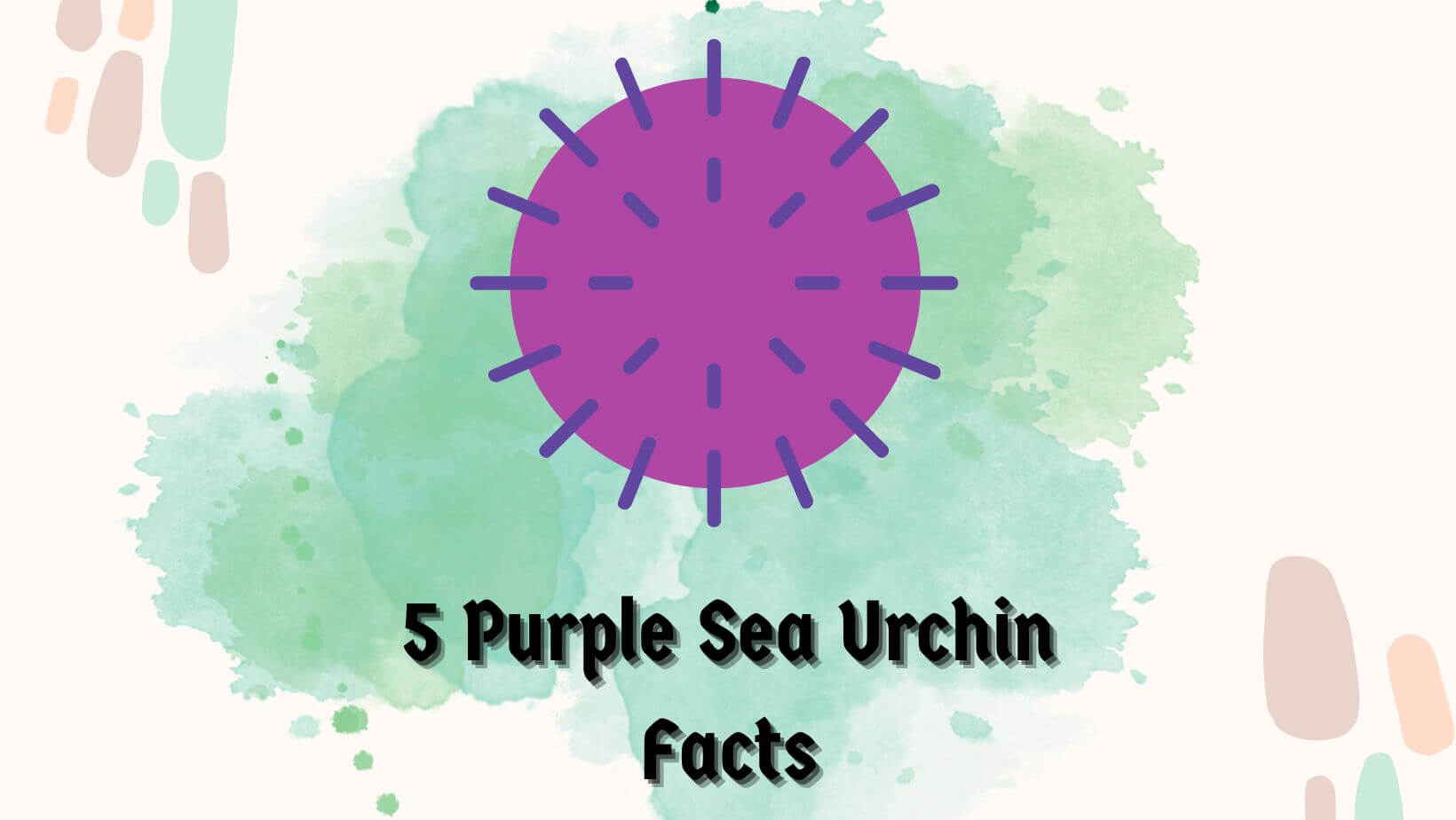
Do you want to explore purple sea urchin facts? If yes, you are in the right place. Welcome to the mesmerizing world of purple sea urchins, where spike exteriors & vibrant colors meet to create an enchanting spectacle.
In this article, I will help you learn their unique characteristics and importance in the Marine ecosystem and uncover five intriguing purple sea urchin facts. Let’s begin with learning the most popular ones without wasting time.
Table of Contents
5 Purple Sea Urchin Facts

Habitat & Distribution
| Key Habitat Features | Description |
| Depth Range | Shallow intertidal zones to depths of over 1,000 meters |
| Preferred Environments | Rocky reefs, kelp forests, seagrass beds, and coral reefs |
| Substrate Preference | Attach themselves to rocks, crevices, and various hard surfaces |
You might already know that Purple sea urchins can be found in shallow intertidal zones to depths exceeding 1,000 meters. These fascinating creatures like to take refuge in rocky reefs, kelp forests, seagrass beds, & even coral reefs, where they can securely attach themselves to rocks, crevices, & other hard surfaces.
Looking at their geographic distribution, you will be amazed by the global presence of purple searching. However, purple sea urchins are primarily found and abundant along the Western coast of North America, ranging from Alaska to Baja California, which showcases their adaptability to various oceanic conditions. Some of the interesting facts regarding the distribution patterns are the following.
- Interesting Fact 1: You’re likely to find a large population of Purple sea urchins widely distributed along the West coast of North America, particularly in California.
- Interesting Fact 2: Purple sea urchins are also quite abundant in other regions of the Pacific Ocean, including Japan & China, where they contribute to the diverse marine ecosystems.
- Interesting Fact 3: Studies have shown that purple sea urchins can adapt to different environmental conditions, which has led to the emergence of their unique population and endemic species in certain areas.
Physical Characteristics
| Description | |
| Spherical Shape | Sea urchins are usually covered in long, sharp spines for protection and locomotion, like other subspecies. |
| Spiny Exoskeleton | Sea urchins use their tube feet for movement whereas pedicellariae use them for defense & cleaning. |
| Oral & Aboral Sides | Differentiated between the bottom (oral) side and the top (aboral) side |
| Tube Feet and Pedicellariae | Sea urchins use their tube feet for movement, whereas pedicellariae use them for defense & cleaning. |
The most striking feature I find intriguing of purple sea urchins is their vibrant purple color, which gives them their name. You should know that their coloration can also vary within the species; some individuals can be darker in purple, whereas some can be lighter.
On the other hand, some can also have patches or bands of different colors on their shells, which add to their populations’ visual diversity. However, the intensity and the variation in the coloration can be affected by environmental factors like water temperature, light intensity, and nutrient availability.
Also, you should know that purple sea urchins are known to pose a unique set of physical characteristics that distinguish them from other Marine creatures. They have a spherical body and spines that serve as protective armor and a means of locomotion.
You should also note that this remarkable creature tends to have two distinct sides, the bottom side, known as the oral side, where they feature their mouth & specialized feeding structure.
And the top side, where they host the anus, is an opening for water intake and waste expulsion. It is also known that purple sea urchins rely on their hundreds of tiny tube-like structures known as tube feet to facilitate movement. These remarkable appendages help our little friend maneuver gracefully across various substrates.
Feeding Behavior & Diet
| Key Food Sources | Description |
| Primary Diet | To graze on kelp & algae, they possess specialized structures like Aristotle’s lantern for efficient grazing. |
| Feeding Adaptations | To graze on kelp & algae, they possess specialized structures like Aristotle’s lantern for efficient grazing. |
| Feeding Behaviors | To graze on kelp & algae, they possess specialized structures like Aristotle’s lantern for efficient grazing |
Purple sea urchins are herbivores with a crucial role in marine ecosystems. You might already know that the primary diet consists of various species of kelp & algae, making them important grazers in the underwater realm.
Also, purple sea urchins possess specialized feeding structures, such as Aristotle’s lantern, to efficiently consume their plant-based meals. If you’re wondering what is Aristotle’s lantern? It is a complex set of jaw-like structures and teeth that helps our little friend in scraping & breaking down plant material.
When it comes to feeding behaviors, these echinoderms use their tube feet to scrape algae off surfaces & subsequently consume it. This is important to keep the overall dynamics of marine communities in shape while maintaining the balance of biodiversity.
Their constant grazing on algae keeps the algal community population in check and increases diversity. To help you understand better, below, I am giving three major ecological significance of purple sea urchins consuming algae & kelp.
3 Major Ecological Significance
- Do you know Purple sea urchins have a special relationship with kelp forests? They not only graze on kelp but also help in controlling its growth while preventing overwhelming dominance. This further allows other organisms and plant species to thrive better.
- Their presence and grazing behavior contribute to the overall biodiversity & community structure within marine.
- Conversely, the Overpopulation of purple sea urchins can lead to ecological imbalances. If purple sea urchin is abundant in a particular area, excessive grazing will result further, leading to decimating kelp forests & affecting the entire ecosystem.
Reproduction & Life Cycle
Many ask, ‘Do sea urchins reproduce sexually or asexually?’. To answer that, you need to understand the reproduction in purple sea urchins, which occurs through both sexual & asexual methods, each with its unique characteristics.
Sexual reproduction involves the fusion of male and female gametes, whereas asexual reproduction helps sea urchins produce genetically identical offspring without needing a partner.
If the Purple sea urchins choose to go with sexual reproduction, they’ll release their gametes into the water. This process is called broadcast spawning, which typically occurs during specific periods when environmental conditions are also favorable for fertilization.
They usually release sperm & eggs, which undergo a fascinating journey of fertilization, leading to the development of a new generation of sea urchins. However, many factors like temperature, salinity, and the timing of gametes releases greatly influence the reproductive success of purple sea urchins.
If you want to know ‘how temperature affects sea urchins,’ consider reading this article. Studies already found that changes in these factors caused by human activities or natural phenomena can disrupt the delicate balance required for successful fertilization and larval development. Talking about the development, I am mentioning some fascinating facts about their larval stages that you should know.
- Pluteus Larva: After fertilisation, the urchin embryo develops into a pluteus larva. This larval stage possesses long arms & a transparent body which helps them float and is dispersed in the water column.
- Feeding Adaptations: When they’re in the Pluteus larvae stage, they use their ciliated bands, specialized structures, to capture microscopic food particles for survival & growth during their aquatic phase.
- Metamorphosis: As the larvae mature, sea urchins undergo a dramatic metamorphosis, transforming into miniature versions of adult purple sea urchins. This process involves the development of spines, tube feet, & the characteristic round body shape.
Interactions & Adaptations
Purple sea urchins have evolved various defense mechanisms in the vast ocean ecosystem, just like other creatures. These kinds of defense mechanisms help them fend off their natural predators.
When it comes to the natural Predator, purple sea urchins face a wide variety of marine species, including triggerfish, lobsters, & Sea otters. You should know that each Predator tends to employ unique hunting strategies, taking advantage of our little friends’ vulnerability.
However, our little friends also possess long spines on their spherical bodies, a physical barrier against predators. In addition to spines, they are equipped with specialized structures called Pedicellariae, which can grasp & sting potential threats.
Some sea urchin species are also known to produce toxins which further act as a chemical difference. However, purple sea urchins tend to be nonvenomous. You should know that they are also quite good at camouflaging to avoid detection.
Certain purple sea urchins have exhibited remarkable camouflaging ability by covering their bodies with debris, algae, rocks, or shells, blending seamlessly within their surroundings.
In addition, you should note that some sea urchins have demonstrated protective behavior, like hiding in crevices or burrowing themselves into the sediment to minimize the risk of predation exposure.
- Also Read
- Do Sea Urchins Feel Pain?
- What Does Sea Urchin Taste Like?
- Do Sea Urchins Put Rocks on Their Heads?
Conclusion
Purple sea urchins are known to come with unique life cycles, fascinating adaptations, as well as interaction with other Marine organisms, which has captivated the curiosity & imagination of both scientists and nature enthusiasts alike.
However, we must understand and conserve this remarkable creature to maintain the balance of our ecosystem and keep the population in check. We must also recognize the importance & implement sustainable fishing practices to ensure the continued existence of purple sea urchins.
Over-harvesting of purple sea urchins by humans greatly influences their diversity and population. I hope I have given you all the information you need on the purple sea urchin facts. And, If you find this information amazing & fun to read, consider checking our other helpful articles. See you in the next post, till then, take care and goodbye.

